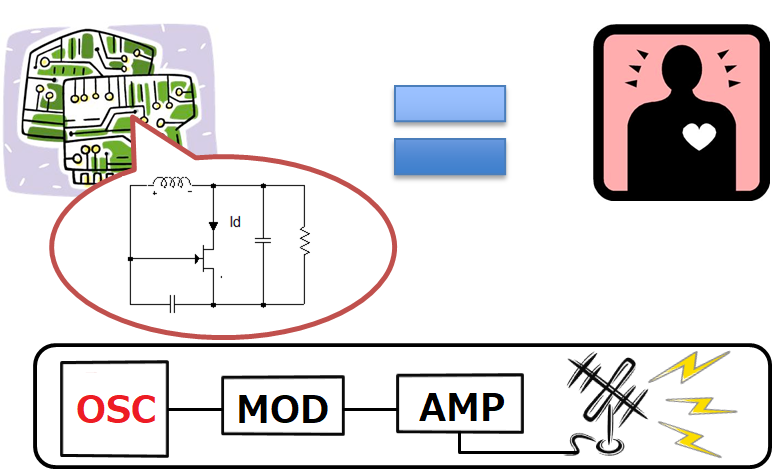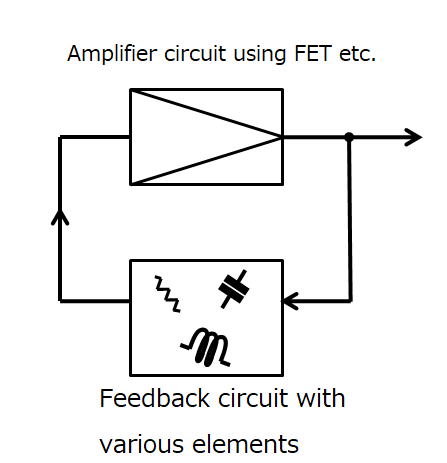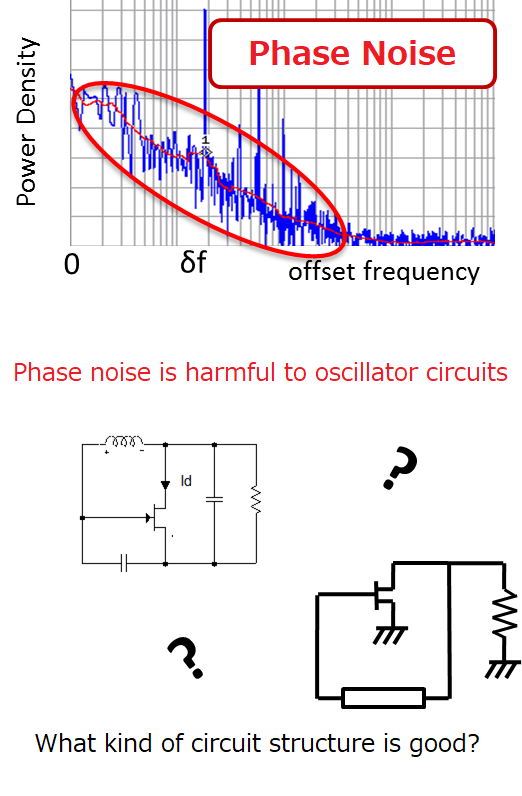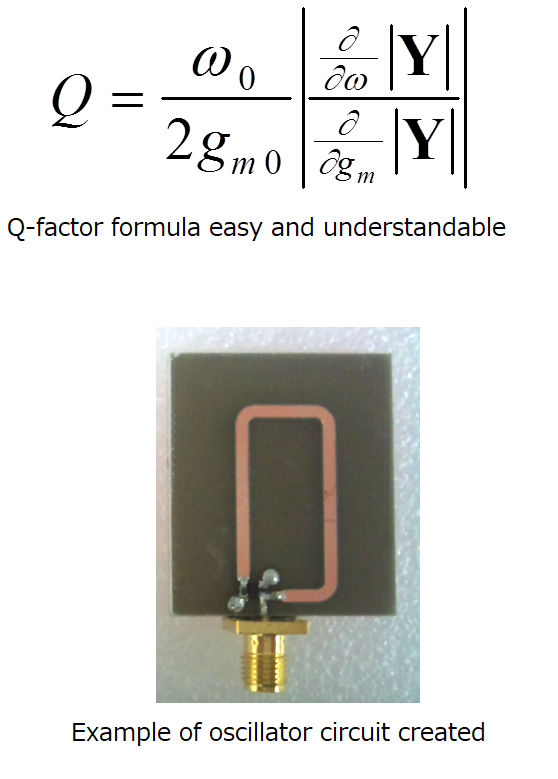■ What is an oscillator circuit? |

|
An oscillator circuit is a circuit that creates something from nothing,
It is used as the heart of every electronic device.
(For example, the wave source of the signal used for communication and the digital circuit
Reference signal generation for synchronization, etc.)
Our lives are made possible because of this circuit.
It is no exaggeration to say that.
|
■ How to make ? |

|
The configuration of the oscillator circuit is very simple, and the active element
just return. Due to the characteristics of this feedback section,
Determines the signal to be output.
|
■ Sounds easy... but what's the problem? |

|
The configuration of the oscillator circuit is simple, but as mentioned earlier
This circuit is used as the heart of every electronic device.
Therefore, the circuit configuration must be highly stable and low noise.
Especially noise that appears near the oscillation frequency (this is called phase noise).
If the value is too large, communication may fail or devices may malfunction.
This phase noise is used as a performance index for conventional oscillator circuits.
But for phase noise has the following problems …
・ difficult to obtain by numerical calculation
・ unclear which circuit configuration will result in low phase noise
|
■ Our research |

|
In order to solve this problem, we decided to
a new metric instead of phase noise as a performance metric:
We suggest using the Q factor.
The Q-factor is a value that can be numerically calculated from a circuit,
It is represented by a very simple formula.
In other words, it becomes possible to evaluate the circuit very easily.
Currently, using this index, we are conducting numerical analysis of oscillator circuits with various configurations,
We conduct theoretical verification through simulations and experiments.
As a result, a new oscillator circuit with high stability and low phase noise,
we will create a topology.
Easy-to-understand oscillator circuit poster (PDF)
|



